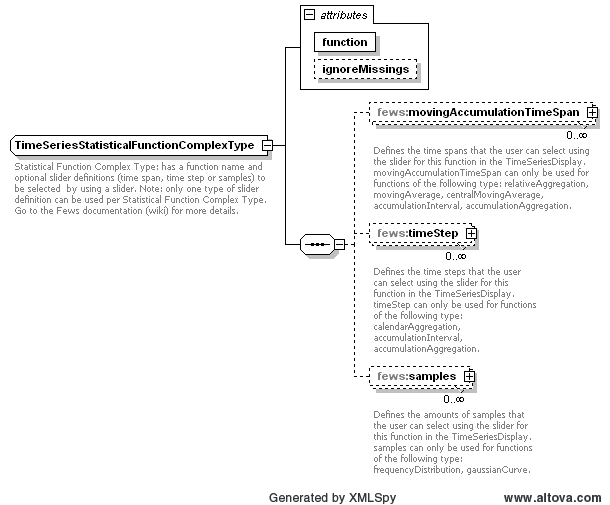...
Time series statistical functions are statistical functions that use one equidistant, scalar time series to produce another one using a statistical function. When defined, a list of statistical functions will be displayed in the Time Series Display. If the user selects a function then for each (equidistant, scalar) time series in the display another one is generated and displayed with the calculated results. Calculated time series are displayed in the same graph as the time series they are based on.
Some statistical functions require an additional accumulation time span, time step or samples which the user can select using a slider. As soon as the user selects a different value from the slider the calculation is launched with the new value.
...
- calendar aggregation (with associated time step).
- relative aggregation (with associated time span).
- duration exceedence (i.e. sorted descending).
- duration non-exceedence (i.e. sorted ascending).
- moving average (with associated time span).
- central moving average (with associated time span).
- accumulation interval (with associated time span or time step).
- frequency distribution (with associated samples).
- gaussian curve (with associated samples).
Time span schema
Time step schema
Samples schema
The (central) moving average function only works for true equidistant data (i.e. no daysOfMonths etc.)
The difference between moving average and central moving average is that the central moving average uses values before and after the current value to calculate the average. Moving average only uses values in the past.
...
